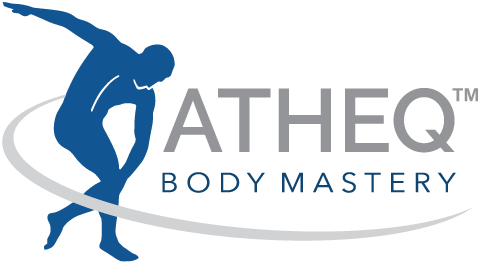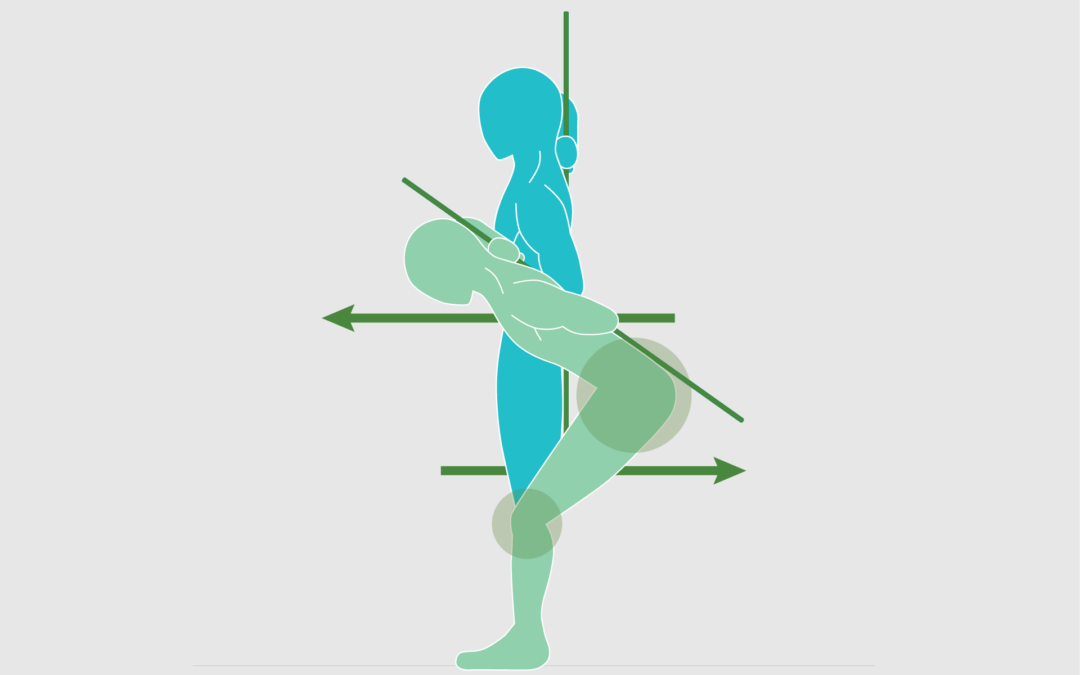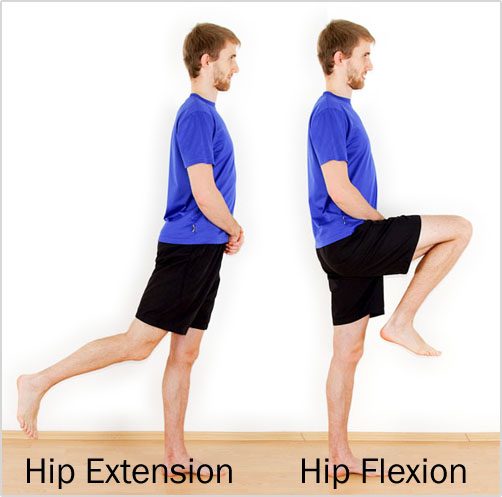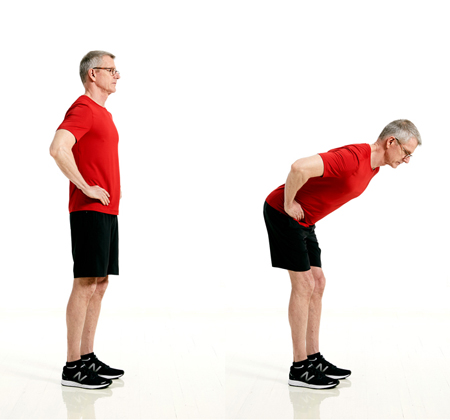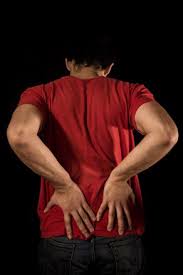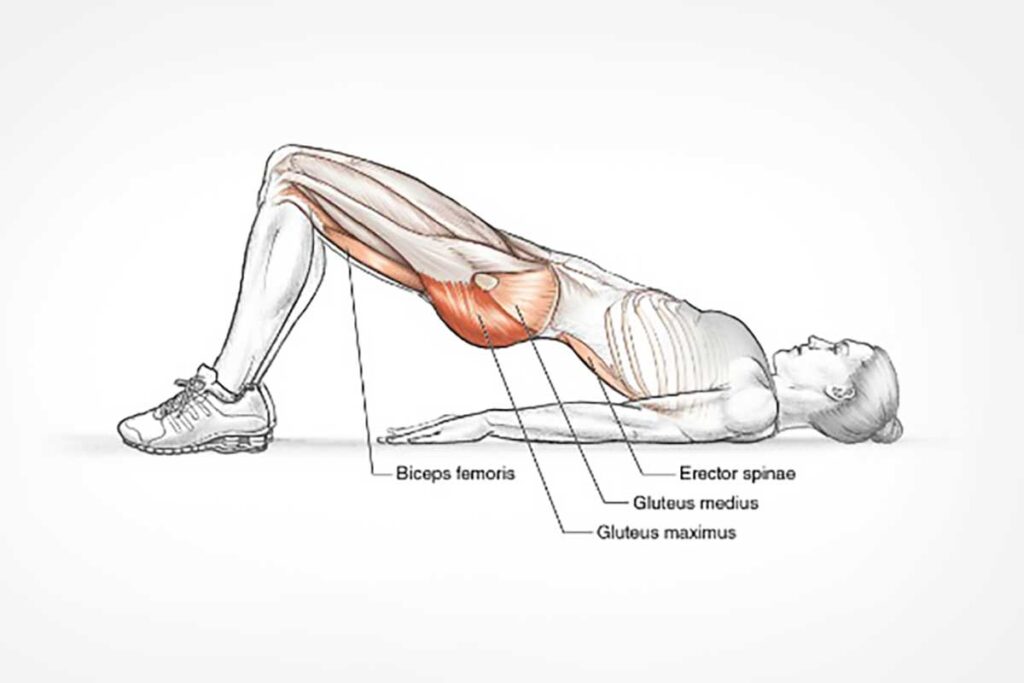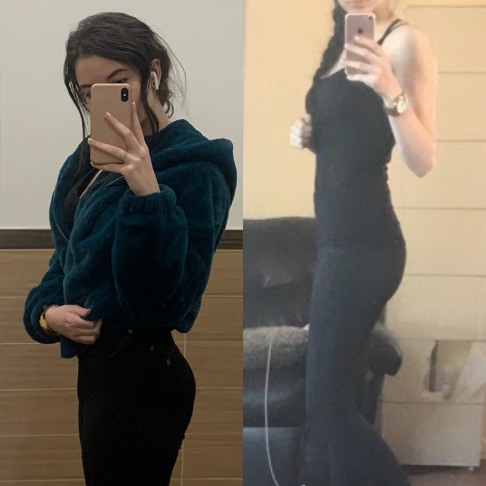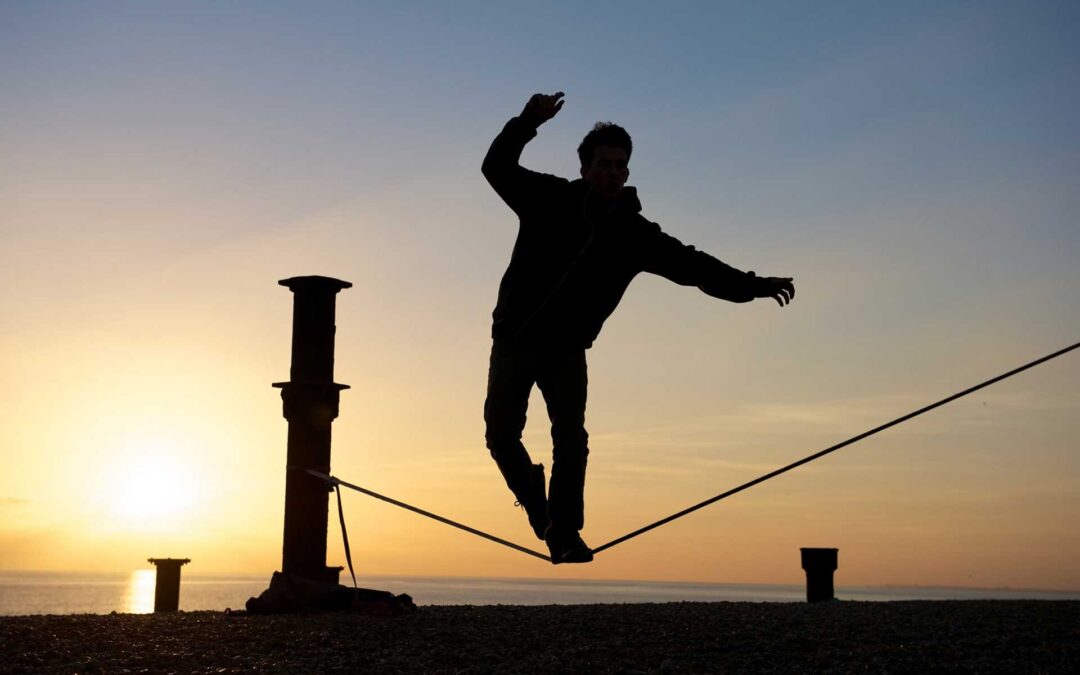
A Shift In Programming – Balance
Today I want to discuss a topic that is a very popular, important, and in my opinion deeply misunderstood. That topic is balance. I have taken clients who are over 70, and clients who are in their 20’s and remarkably improved their balance on one leg, and in their gait cycle in as little as 10 minutes. How is this possible? I work with balance by addressing two things. I address the biomechanical/physiological component of balance by stabilizing the hip and changing the brains priority to inhibit compensation at the ankle/knee. I also address proprioception, which is the brains ability to know where it is in space, and then compensate via a proprioceptive system. Let’s discuss the mechanical component of balance first, because that is the one I see underutilized the most often.
When we walk we are forced to balance on one leg in the middle of the gait cycle. If you think about walking for a moment and even walk around yourself, you will feel this transition if you slow down your gait. At one point, you are forced to stabilize on one leg, even if it is very briefly. Of course running, sprinting, jumping (one leg), etc. is the same system, just with more load and force. The interesting thing is that although the human body is equipped with tools that help us balance inherently, we almost never employ them. We seem to have forgotten about them. The first thing we tend do when we get on one leg is feel the onus and pressure of our balance in our ankle. If you try to balance on one leg you may experience your ankle rocking from side to side in order to stay upright. With repetition, or with elite natural athleticism you may have excellent natural balance and not be forced to compensate into the ankle. But eventually if you do lose your balance, or start to, you will feel your ankle rock to try to compensate. To me, this movement pattern shows an over reliance on limbs and joints that are simply not designed to stabilize our entire body weight. We have forgotten about our hips.
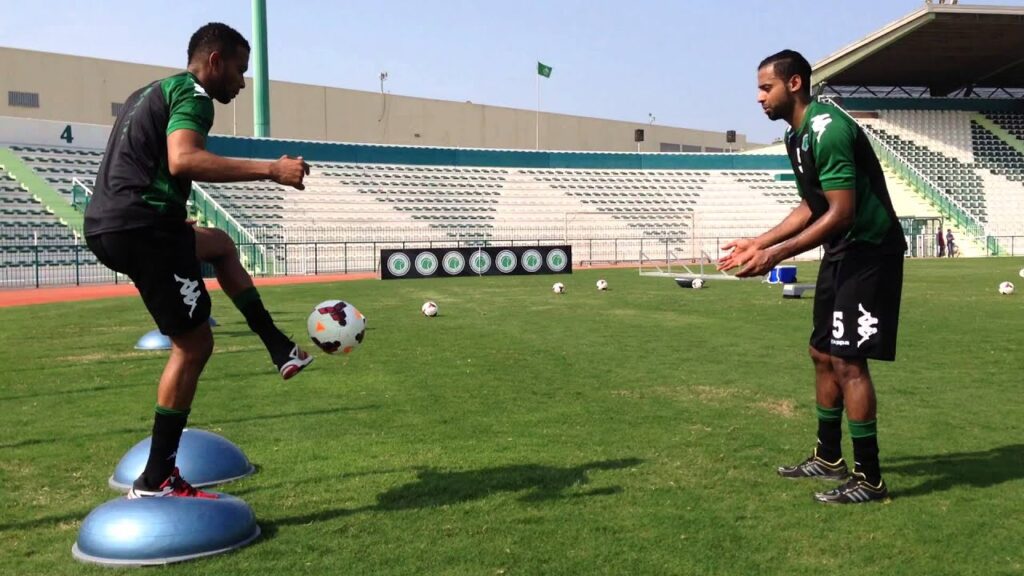
I am going to say something fairly controversial. Stability and balance begins at the hips. It begins with a stable hip angle, and that is achieved through a strong hip complex. Look at the picture above. This athlete is loading at the hip via his glutes. Notice the bent knee and slight hip hinge. The hips should never drop/dip from side to side when going to one leg, either when balancing or in the gait cycle. Once again we find the need for strong glutes and glute medius in order to achieve good stability through the pelvis. But how do we know this to be true? We can extrapolate this to be true, and that pelvic stability is directly impacted by the glutes by understanding what the glute medius does. The glute medius controls the internal and external rotation of your femur. What this means is when your knees fall into the mid line of your body, or a valgus position, most likely your glute medius is either weak, or inactive. I work on activation of this muscle and programming of this muscle for all my clients. It is essential for knee health. What the glute medius also does is that it stabilizes the pelvis and keeps it level when we are in the gait cycle, or when we lift one of our legs in general. A level pelvis means that the bodies’ kinetic chain is now stable from the hip. If this is stable, that means the knee does not have to compensate for the hip dropping, and of course the ankle does not have to compensate as well. In layman’s terms, finding your glutes and a stable pelvis automatically increases your ability to balance, provided there is ample strength in the areas you are trying to activate.

I had a teen age client a few months back that was experiencing ankle issues in athletics. Instead of focusing on his ankle mobility first, I got him to neuromuscularly activate his glutes in his one leg balance work. We worked on consciously forgetting about his ankle instability, and to find stability in the hip first. He worked on the programming, accompanied with procioceptive work, and his ankle issues disappeared shortly. If you think about it anatomically, when activating the glute medius it immediately helps with pronation, and helps to align the talus bone slightly in the ankle- thus achieving improved stability from the ground up as well. We of course addressed ankle mobility as well, but that was not the main focus, that was a corrective at the end to make sure the issue never came back. His one leg balance was poor when we first started this work. He averaged less than 10 seconds on either leg. He can now balance on one leg for an average of 30 seconds, with hardly any compensation in the ankle or knee.
I had an older client a few weeks back who was able to start walking without her instep she had been using her entire life to compensate for her “natural short leg length”. When we stabilized her pelvis in her walk and got the glute medius to fire appropriately, she was able to walk without the instep for the first time. She told me it was extremely challenging on her hip muscles to maintain a natural gait cycle. Her instep had reinforced her hip instability, and made it that her glute medius never had to turn on. She now can balance on either leg for over 15 seconds. She is approaching 70 years old. She used to fall at times because of her tendency to look for balance in her gait cycle by rolling the ankle to the outside of body. We recreated this pattern on one leg, addressed the pattern, strengthened the muscles associative with this pattern, and the falling/instability disappeared.
I mentioned proprioception before, and it is absolutely worth mentioning now. It should be a staple of everyone’s training/workout routine in some fashion. Proprioception is the following according to the medical dictionary.
“A sense or perception, usually at a subconscious level, of the movements and position of the body and especially its limbs, independent of vision; this sense is gained primarily from input from sensory nerve terminals in muscles and tendons (muscle spindles) and the fibrous capsule of joints combined with input from the vestibular apparatus”
So how can we impact our body’s ability to proprioceptor? We can work on balance as a practice, because the act of balancing on one leg, or even with a hand on the wall for support, is still challenging that system. If you want a true challenge, try your balance work without visual input. AKA close your eyes. Balance work becomes incredibly difficult when we shut down our visual ability to know where we are in space. I use components of proprioceptive training combined with neuromuscular cues and hip stability essentials to improve my client’s ability to balance no matter what age they are. I should note, that when testing balance cues with neuromuscular emphasis, the success rate of my programming skyrockets when proper gluteal control is achieved without compensation from surrounding hip extensor related musculature.
Last thing to mention. Most people are entirely quad dominant in their balance work. How do we know this? They lock their leg when working on their balance. This is an extremely common mistake I see in yoga, and other programming. All balance work should be done in a similar manner in which we walk. Soft knees, or a very slight bend at the knee allows the hip a chance to properly fire in one leg stance/balance work. If you, or any loved ones have suffered from poor balance, ankle instability, or other related issues please comment below. I have never had a client who suffered from ankle issues that also had proper hip strength/stability. If we remember the body is a kinetic chain and address it as such, many such issues- including balance problems, can simply disappear.
Until next time everyone, stay safe out there.
https://medical-dictionary.thefreedictionary.com/proprioception
https://www.healthline.com/health/body/proprioception
https://www.ncbi.nlm.nih.gov/pmc/articles/PMC4309156/
